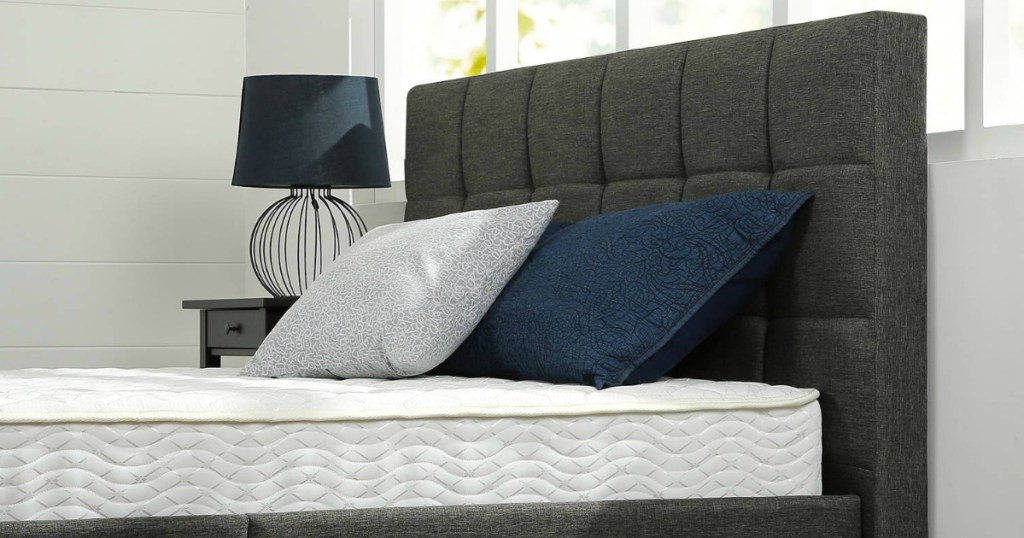As a chicken raiser, one of the most important considerations you must make is in ensuring the security and quality of the poultry houses and coops you build. Native poultry houses and coops must be designed to provide the chickens with protection against the elements, predators, and other threats. From the shape and structural design of the house, to its insulation, materials, and accessories, building native chicken coops and houses requires careful planning and analysis. A basic native poultry house design will provide the chickens with basic shelter and protection from the elements. It is best to use materials that are easy to maintain and cleaning, such as wood or galvanized metal. You should also make sure that the house is tall enough to prevent rodents from entering. The construction of the floor should be durable, as it will be exposed to the elements, and must be elevated to reduce the chance of flooding.Building Native Chicken Coops and Houses
To ensure that your native chicken house design is sustainable and able to stand the test of time, it is important to consider the size and shape of the house. The optimal size for a poultry house depends on the number of chickens in the flock, and must be able to provide enough space for chickens to roost and move around. The house should also have plenty of ventilation, a roof that deflects the elements, and plenty of natural light to reduce stress on the chickens. Metal is one of the most durable materials to use when constructing a native chicken house. It is important to properly insulate the house, as proper insulation will keep the chickens warm when temperatures drop and keep them cool when temperatures are high. You can also install energy-saving led lights in the house, which will be good for the environment and your wallet.How to Design a Sustainable Native Chicken House
In addition to choosing the best materials to construct your native chicken house and coop, proper insulation is also a must. Insulation helps to keep the chicken house warm in cold weather and cool in hot weather. When choosing insulation material, it’s important to pick a material that doesn’t absorb moisture, as moisture can lead to mold and mildew. You should also make sure that the walls and roof of the native chicken house and coop are properly insulated. Cellular insulation or foil-backed insulation are often used in chicken coops, as they are both cost-effective and energy efficient. For more insulation, you can wrap the coop in plastic or choose an insulated chicken coop. Properly Insulated Native Chicken Houses and Cages
The design of your chicken house is an important component for the health and safety of the flock. When designing the house, make sure to consider factors such as accessibility, ventilation, shade, and protection from predators. To provide easy access to the chickens, you should build a house with multiple doors so that you can enter the coop from different angles. For ventilation, make sure to create air vents that are kept open during the hot summer months. Shade is also important for the health of your chickens. If your coop doesn’t include an area of shade, you can install awnings or shade cloth to help provide shade. To help protect the flock from predators, it is best to choose a house that is surrounded by a tall fence, and plant thorny plants around the fence to deter predators. What to Consider in Native Chicken Poultry House Design
When designing a native chicken house, it is best to keep it as simple as possible. This will make it easier to clean, maintain, and provide insulation. Choose a design that is wide enough to provide space for the chickens to maneuver and maneuver comfortably and high enough that the chickens can roost comfortably. Make sure to include windows or ventilation holes to allow plenty of fresh air into the chicken coop. To protect the flock from the elements, make sure the roof is pitched and covered in durable material such as metal or wood. To make the house more comfortable, add bedding and line the floor and walls with wood shavings, newspaper, or straw. Finally, make sure that the house has enough windows or air vents so that the chickens don’t suffer from poor air circulation. Basic Native Chicken House Design for Better Shelter and Protection
In order to maximize the usefulness of your native chicken house, it is important to consider the needs of your flock and the space available. You should consider the number of chickens that will be housed in the coop and make sure that the house is large enough to provide enough space for all of them. You should also consider where the coop will be placed in relation to your property, as the ideal placement is one that offers the most protection from predators and the elements. In addition to considering the size and placement of your chicken house, you should also think about the various accessories that you may need in order to ensure the health and safety of your flock. Accessories such as feeders, waterers, roosts, nesting boxes, and cages are essential for creating a safe and comfortable environment for the chickens.How to Best Maximize Native Chicken House Design
When designing a chicken coop for the outdoors, it is important to consider several factors such as weather-proofing, predator protection, and easy maintenance. Start by choosing materials that can withstand the weather, such as galvanized metal or weather-resistant wood. The floor of the outdoor coop should be elevated and made of durable materials, such as concrete or pavers, to prevent it from flooding. To keep predators out, you should use tough wire mesh on the walls and roof of the coop. If possible, the coop should be placed in an area of the yard that is free from predators and has good visibility. Finally, choose a design that is easy to clean and maintain, as dirty and unkempt coops can cause health problems for the chickens.Designing an Outdoor Native Chicken Coop to Protect Your Flock
When constructing a native chicken house, it is important to make sure that it is stormproof and predator-resistant. To make a stormproof house, start by choosing a design that is made of durable materials that can withstand high winds and heavy rains. Additionally, the house should be elevated to reduce the risk of flooding. If possible, install a weather-proof roof and check that the insulation is adequate. To make the chicken house predator-resistant, you should install sturdy fencing that is at least five feet high, and choose materials that predators cannot easily chew through. Make sure to bury the bottom of the fence to prevent burrowing animals from getting into the house, and install chicken wire or similar mesh on the walls and roof of the house. Finally, install motion-sensor lights and sharp objects such as spikes or barbed wire around the perimeter of the house to deter predators.Making a Native Chicken House that is Stormproof & Predator Resistant
If you’re looking to build a portable native chicken house, it is important to keep the design light and simple. Choose materials that are light in weight but still durable enough to withstand the elements. Make sure that the house is easy to move, by either providing handles or attaching it to a trailer or vehicle. For easy access, add multiple doors and ventilation holes at the roof and sides of the house. When constructing the floor, choose a design that allows the chickens to stand comfortably and make sure there is enough space for them to move around. To provide shade and protection from predators, choose a collapsible roof or use movable walls or panels. Additionally, you should make sure that the house is well insulated to keep the birds warm during cold weather.Tips for Constructing a Portable Native Chicken House
Building a low-cost native chicken house doesn’t have to be difficult. Start by choosing materials that are inexpensive but still offer the necessary protection and comfort for the chickens. Consider using scrap wood, plywood, or corrugated metal for the walls and roof, and make sure to properly insulate the house. Additionally, you can use hay or straw as a cost-effective insulation material. Make sure to choose a design that is easy to clean and maintain, as this will save you money in the long run. You can also reduce the cost of the house by reusing old materials, such as salvaged wood and doors, or by using recycled items such as feed bags and cardboard boxes. By investing a bit of time and effort into building an efficient and low-cost chicken house, you can ensure the wellbeing of your chickens for years to come.Building a Low-Cost Native Chicken Poultry House
Designing and constructing a native chicken house can be a challenge for many chicken raisers, especially those who are new to the game. To help make the process easier, there are a few best practices you should consider when designing the house. Start by determining the size of the house based on the number of chickens in the flock. It is also important to choose durable, long-lasting materials for the house and choose a design that allows for plenty of ventilation and access. Additionally, the house should be tall enough for the chickens to roost comfortably and offer plenty of room for them to move around. Insulation is also important, as it helps to regulate temperature and create a comfortable environment for the chickens. Finally, depending on your location, you should make sure the house is predator-resistant and stormproof.Best Practices for Designing and Building a Native Chicken Coop
Key Considerations for an Efficient Native Chicken Poultry House Design
 Living quarters for chickens should satisfy the necessities of providing functional and safe housing to native chickens, while at the same time being energy-efficient and cost-effective. To ensure that the poultry space provides a comfortable home for the birds, multiple key considerations must be taken into account.
Living quarters for chickens should satisfy the necessities of providing functional and safe housing to native chickens, while at the same time being energy-efficient and cost-effective. To ensure that the poultry space provides a comfortable home for the birds, multiple key considerations must be taken into account.
Bedding and Insulation
 The single most important part of a
native chicken poultry house
is the bedding, which should be able to retain warmth during cold weather and keep cool when temperatures rise. Careful consideration should also be given when selecting insulation as this can help regulate the interior temperature of the coop, thereby making it comfortable for the birds.
The single most important part of a
native chicken poultry house
is the bedding, which should be able to retain warmth during cold weather and keep cool when temperatures rise. Careful consideration should also be given when selecting insulation as this can help regulate the interior temperature of the coop, thereby making it comfortable for the birds.
Ventilation and Airflow
 Adequate ventilation and airflow are essential elements of chicken coop design as both enable the birds to Breathe clean air and prevent the spread of airborne diseases. The poultry house should have windows for natural air circulation, while also installing mechanical ventilation to keep the air inside as fresh as possible.
Adequate ventilation and airflow are essential elements of chicken coop design as both enable the birds to Breathe clean air and prevent the spread of airborne diseases. The poultry house should have windows for natural air circulation, while also installing mechanical ventilation to keep the air inside as fresh as possible.
Security Measures
 In order to keep predators out of the chicken house, it is important to employ security measures such as fencing or screening around the perimeter. Additionally, more advanced security protocols can be put in place, such as installing motion detector lights and sound sensors to alert owners of any suspicious activity or intruders.
In order to keep predators out of the chicken house, it is important to employ security measures such as fencing or screening around the perimeter. Additionally, more advanced security protocols can be put in place, such as installing motion detector lights and sound sensors to alert owners of any suspicious activity or intruders.
Lighting
 Lighting is important to consider when designing a chicken coop, as it affects the natural circadian rhythms of chickens. If the birds are not exposed to enough light, it can cause a reduction in egg production. To ensure that the chickens receive an optimal amount of light, the poultry house should be equipped with full-spectrum lighting.
Lighting is important to consider when designing a chicken coop, as it affects the natural circadian rhythms of chickens. If the birds are not exposed to enough light, it can cause a reduction in egg production. To ensure that the chickens receive an optimal amount of light, the poultry house should be equipped with full-spectrum lighting.




































































:max_bytes(150000):strip_icc()/Chandelier_0635-0b1c24a8045f4a2cbdf083d80ef0f658.jpg)





